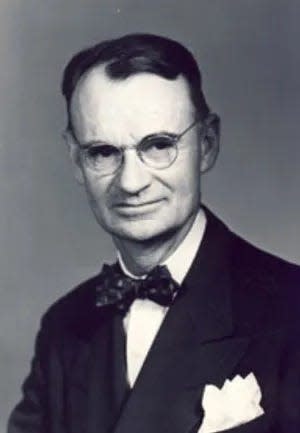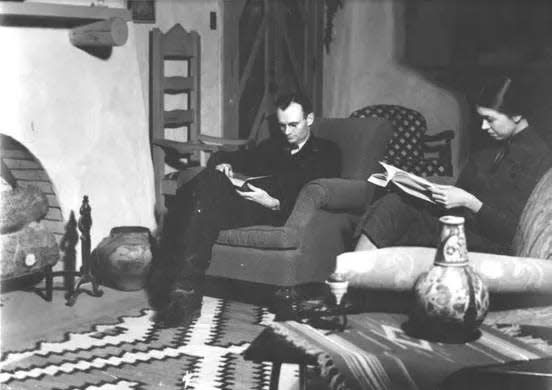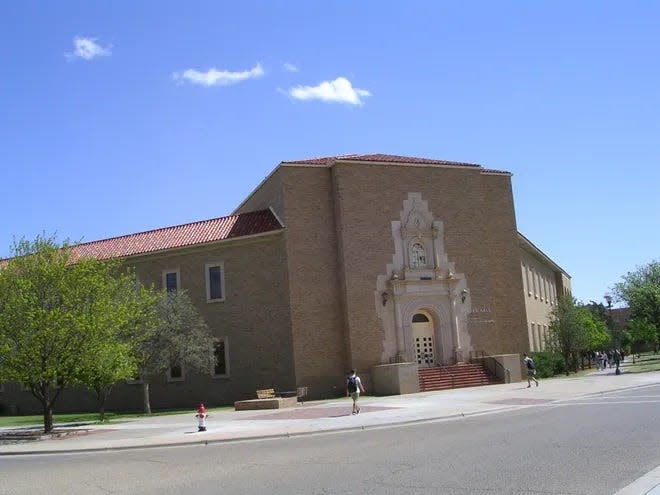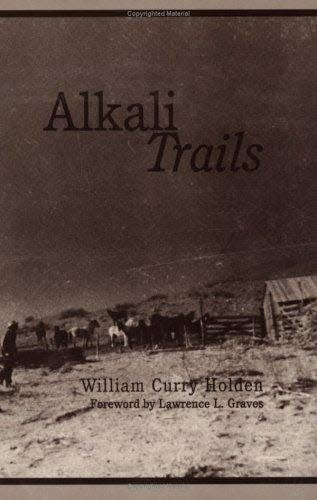Caprock Chronicles: William Curry Holden: Founder of West Texas Museum
- Oops!Something went wrong.Please try again later.
Editor’s note: Jack Becker is the editor of Caprock Chronicles and is a Librarian Emeritus from Texas Tech University Libraries. He may be reached at jack.becker@ttu.edu. Today’s article is by Dr. David Murrah and is the third article in a year-long series celebrating TTU’s centennial. Dr. Murrah authored last week’s article on the Lady Raider’s 1993 Championship basketball season, which originally ran on March 4, 2018. The article was incorrectly attributed to Paul Carlson. The editor regrets this mistake.
William Curry Holden thought like an entrepreneur. In the spring of 1920, he was 24 years old and teaching school in Rotan, Texas. But he knew he needed to find a way to live in Austin so that he could attend the University of Texas. His solution: seek a seat in the Texas Legislature.

His campaign against two other young West Texans was nothing like today’s mean-spirited politics. Instead, he offered the other two — Charles C. Thompson of Colorado City, and R. M. Chitwood of Sweetwater — the opportunity to tour the district with him in his Model T Ford. They all shared meals and gasoline and became good friends, and in time became permanently emblazoned in Texas Tech history.
Holden lost by a narrow margin to Chitwood, and, although his political career was short-lived, in his campaign, he strongly advocated for the establishment of a West Texas A&M. Holden did get to see his dream materialize three years later when Texas Tech was created by the legislature as an outgrowth of the West Texas A&M movement.
And, Holden found another way to get to Austin to get a graduate education, and fortunately for West Texas and Texas Tech, he returned to make a major impact on Tech and the region’s history and culture.

William Curry Holden was among the very first to research and to write West Texas history. He was one of the first archaeologists to identify important historical sites. And, because of his vision, he played a major role in the founding or development of Texas Tech’s four major historical and cultural institutions, the Museum of Texas Tech University, the Southwest Collection/Special Collections Library, the National Ranching Heritage Center, and the Lubbock Lake Historic Landmark.
Born in Limestone County, Texas in 1896, Curry Holden was two when his family moved to West Texas, where his father struggled in farming near Colorado City and later Rotan. Holden graduated from Rotan High School in 1914, and, after obtaining a teaching certificate from Stamford Junior College, he began his teaching career that would continue for the next 52 years.
While teaching public schools, Holden attended summer school at West Texas Normal at Canyon, and, then, in the fall of 1920, entered the University of Texas, where he completed a four-year program in just three years. In 1923, he became head of the History Department at the new McMurry College in Abilene, and while teaching there, he used his summers to earn two more degrees at the University of Texas, including his PhD in 1928.
Holden’s academic success soon attracted the attention of the president of the new Texas Technological College at Lubbock, who hired Holden to teach both history and anthropology beginning in 1929. “I’d never seen a book on anthropology,” Holden later confessed, “so I got a book and stayed two jumps ahead of the students.”

Holden soon became an internationally known anthropologist. In 1932, he began field studies of the Yaqui Indians of Sonora, Mexico, and subsequently wrote four books on the subject. He also directed archaeological excavations throughout West Texas and New Mexico. His most significant discovery came at his doorstep when he identified the great significance of the Lubbock Lake Site as being utilized by every human culture that has occupied North America over more than twelve thousand years.
As a historian, Holden was among the first to write about West Texas. By the time he was 38, he had written three books, Alkali Trails, Rollie Burns, and The Spur Ranch, which still remain as definitive works in social and ranching history. In all, Holden wrote 12 books.
Holden also had a brilliant career at Texas Tech, serving as head of the combined departments of history, anthropology and sociology, as well as dean of the Graduate School, and was instrumental in the establishment of Tech’s Ph.D programs in four fields, including history. And, for 36 years, he served as director of the West Texas Museum.
In that position, he achieved almost the impossible; first, he secured funding in the midst of the Great Depression to build a basement headquarters for the museum; in 1950, he raised funds for its completion, a building that became an imposing structure on the circle at Texas Tech. In all likelihood, it became the first building on the Tech campus to have been built because of the vision and energy of one person.

Interestingly, by the late 1960s, Texas Tech had named dormitories for the two candidates who had run against Holden in his 1920 campaign for the legislature. Charles Thompson, who became a member of the Texas Tech Board of Directors in 1937 and served as its chair from 1944 to 1957, was honored in 1958 when the school named Thompson Hall, for him. Similarly, R. M. Chitwood, who became the school’s first business manager in 1924, became the namesake for Chitwood Hall, constructed in 1967.
And so, when in 1972, Texas Tech renovated and enlarged the West Texas Museum building, it was only appropriate that it be named for the third member of that 1920 campaign, William Curry Holden. Today, Holden Hall still stands as a permanent memorial to the tall, lanky kid from Rotan, who died in 1993, and whose tombstone in the Lubbock Cemetery records him as being simply “a pretty fair country school teacher — with vision.”
What a vision it was.
This article originally appeared on Lubbock Avalanche-Journal: Caprock Chronicles William Curry Holden: Founder of West Texas Museum

